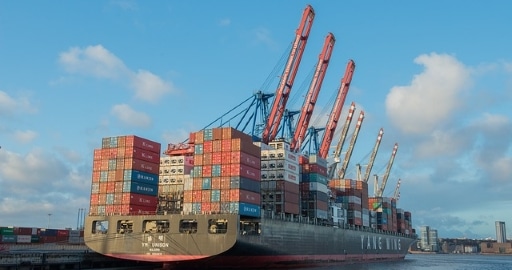Shippo have been our go-to for importing goods for our small business over the last 4 years. The team are helpful and transparent and keep us in the loop with regular updates when needed.Ayesha Mahomed
Bill of Lading (B/L or BOL)
The official shipping document containing details about the shipment. It represents ownership of the goods so it’s ‘release’ to the intended recipient of the goods is often held until a final payment for the goods is complete. Without either an Original paper B/L or an electronic (see Telex) release, the goods cannot be delivered.
CBM (M3)
Cubic Metre. The unit that volume is usually calculated in (although cubic feet is sometimes used). 100cm x 100cm x 100cm equals one cubic metre.
C&F (or CFR) and CIF
Cost and Freight or Cost, Insurance and Freight. It is a term of trading in which the buyer of the goods pays an amount which covers the cost of the goods plus the cost of transporting the goods to the port of discharge (just landed, no local charges are prepaid). CIF also includes marine insurance.
Certificate of Origin (C of O, Form A)
A document certifying the country in which the goods originated. It’s normally issued or signed by the relevant Government Department, Chamber of Commerce or Embassy of the exporting country. These aren’t always required but can be used to lower import duties from certain countries.
Commercial Invoice
The commercial invoice contains the buyer and seller’s details in addition to the type of goods, quantity, price of each product and terms of sale. The commercial invoice is used to declare the goods to customs therefore dictating the amount of Duties and Taxes to be paid.
Consignee (Cnee)
The person or company receiving the shipment. To whom it is consigned. If you’re importing goods, it’s you or your company. The Shipper sends the goods to the Consignee.
Container
A standardised metal box usually 20ft or 40ft in length that can be relatively easily interchanged between trucks, ships and trains without having to unpack the goods inside. It’s unlikely that your goods will be shipped in anything else. Click here for more details.
EORI
An EORI (Economic Operator Registration and Identification) number allows customs to keep a record of what’s being imported and exported. You’ll need one in order to import goods into the UK. We can help you with this and once you have an EORI number you can use it on your future imports too.
ETA
Estimated Time of Arrival. Generally used for the date that the ship or plane is due to arrive at its destination port.
ETD
Estimated Time of Departure. Generally used for the date that the ship or plane is due to leave its port of origin and begin its journey.
Ex Works
A term of sale in which the buyer is responsible for collecting the goods at the premises of the seller and accepts all costs and liabilities from that point onwards. Click for more details
FCL
Full Container Load. If you have enough goods to fill either a 20ft, 40ft or 40ftHC container then your goods would be shipped as a Full Container Load.
FOB
Free On Board is a term of sale where the seller is responsible for all charges and liabilities of transporting the goods all the way up to their arrival on board the ship. It includes all charges at the port of loading.
High Cube (HC or HQ)
Any container which exceeds 8ft 6in (102 inches) in height and usually totals 9ft 6in.
Kerbside Delivery
Standard delivery for shipments is kerbside, unless otherwise requested. In this case, the driver will park the truck outside your premises, then it is your responsibility to unload your goods. If you don’t have a forklift and delivery is kerbside, you may need a few extra hands to help you out.
LCL
Less than Container Load. If you don’t have enough goods to fill a 20ft container then your goods would be shipped as a part load or Less than a Container Load. In this instance your goods will be loaded into a shared container with goods from other companies.
MOQ
Minimum Order Quantity is the smallest amount of a product that company will supply. If a buyer cannot meet the MOQ Requirement, their supplier won’t enter production. This is quite commonly used on Alibaba.
Notify Party
On the Bill of Lading this is the person or company that should be notified about progress when the ship is landing at its destination. Normally it is the “Same as Consignee”
Packing List
A document provided by the shipper detailing what goods are within the shipment and how they are packed. It includes carton numbers, number of items within the cartons and weight and dimensions of the cartons.
POD
Port of Discharge. The port at which the goods are unloaded from the vessel.
POL
Port of Loading (sometimes called Port of Origin). The port at which the goods are loaded onto the vessel.
Shipper
The Shipper is the sender of the goods. If you are importing goods from an overseas supplier then your supplier is the Shipper. The Shipper sends the goods to the Consignee.
Shipping Marks and Numbers
Shipping marks are placed on packages for identification purposes. They can be the size and weight of the carton, the recipient, the number of the carton (e.g. 1 of 6 etc) and sometimes a shape. These marks are essential to differentiate the boxes belonging to each set of goods within a shared container.
Tail lift Delivery
If your goods are heavy and you don’t have access to a forklift then a tail lift delivery might be necessary. The driver will be in a truck that has a tail lift on the back and can lower your pallet to the floor.
Tariff Code
Every product has a corresponding code that’s used when goods are cleared through UK customs. This code denotes the percentage of duty that’s paid on that product and can be found at www.gov.uk/trade-tariff.
TEU
Twenty-Foot (20′) Equivalent Unit. Commonly used when talking about FCL rate increases or representing the number of containers in a particular situation. A 20ft container is one TEU and a 40ft container is two TEUs (the equivalent size of 2 x 20ft containers).
Telex Release
Telex release and Express release are terms that refer to the electronic handover of the Bill of Lading. Traditionally the Original B/L is posted by the Shipper to the Consignee and in turn it must be forwarded on before the goods can be released. Telex release is instant so has become the favoured option.
Transit Time
Transit time is the amount of time that either the ship or plane is traveling for between the Port of Loading and the Port of Discharge. Not to be misconstrued as the total amount of time it takes to move the goods from door to door.
If you want more information on any of these terms you can’t find what you need then contact us on 0203 384 0498 or info@shippo.co.uk
